
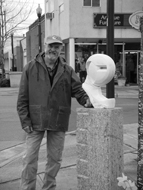
SN: Could you give us a little of your personal history as it relates to your being an artist?
DM: Most people within NWSSA know me as the “tool man,” since I have been sharing information on power tools at symposia for the past several years. My background in metal fabrication and wood carving brought along acquired knowledge of grinders, sanders, saws, torches and welders. A few years in electronic engineering increased my awareness of mechanical and electrical safety issues.
Stone came into my sculptural life about 10 years ago, with hand tools and Tenino sandstone leading the way. It forged an Earth connection that helped restructure my life. It opened a deeper questioning that flowed through the processes of meditation, yoga, tai chi and shamanic quests that have enlivened the sculptural forms that followed. Much of my work forms around this personal search and becomes a practice of unfolding the material of life. Commissioned pieces have allowed sharing the processing and opening with others, a communal space of knowing and explaining through form.

SN: Would you call your work representational?
DM: Yes, most of the forms I carve are themselves. Without being too philosophical, our human species is a bunch of story tellers. We like making stories to explain life, and how or why it happens. We are not so complacent that we accept things the way they are, and we tell stories in all manner of ways to either juice it up or down to the momentary cultural bliss we want to live in. Historically, sculpture is another way of making a story real.
My wife and I were in Italy last fall and the stone stories of the ancient ones were beautiful, intricately conceived and carried out to support the stories of power that paid for them. An illiterate populace could see the familiar stories of their culture and talk about them from a common vision. Of course the vision was selected by the church, state or aristocracy, but we got the idea that art mattered not just as a representation, rather it begat spirit out of idea and into a material form that all could know. The stories then gained power because they each one had the same basic structure or form that became the cultural norm. Well, that’s probably a longer answer than you wanted.
SN: Not at all, that’s a really interesting answer. And now can you tell us how you develop your own version of these forms that you mention?
DM: Each one is different, of course, but there are a lot of similarities too. Frequently there is the well-known flirt from the stone yard, that incredible glint of the extraordinary that catches my eye, mind and spirit. Thereafter, it is a love affair with beauty and the ambitious courting dances that one devises to lure it out into the open for all to see. You know, it really has a lot to do with showing up and doing the sweat and dusty, dirty, daily grind. I read a lot of books and journals about art, spirit, writing, poetry, etc. The productive people in all of them have what they frequently refer to as a practice. This practice amounts to putting yourself out there on a routine basis and engaging what it is that matters in your life in a meaningful dialogue. Once the dialogue becomes familiar, so does the unfolding of the creative.

Since I am the tool man, here’s a short, metaphorical tale about a tool that might be helpful when things need to be juiced up a little – more directly, when I can’t quite see the sculptural form or shape of an idea I’m working on.
There is this woman who is feeling lethargic and she comes to the local shaman for some help. He tells her to think about her lethargy, go out and find a stone, one that calls to her in a special way. She then brings it to him and traces out symbols/figures on one side and then another. She then tells the story of how each figure relates to her lethar
This method is a psychological projection thing. I am both the shaman and the client. The rock is of course the one I’m working with. I sketch the figures or mold them in clay and write down the story that comes out of the process. The shaman’s simple advice, put into action, often opens up doors. Sometimes just the story, or a poem, is enough to lift the veil. So the work is happening and the flirt is blooming into a full blown affair. The important thing now is to not let your ego do something stupid. Stone gone is gone. But I’m sure that you know that is part of the work too.
SN: Wow. Thanks, your projection method sounds like it might be useful when we just can’t get an idea going. Would you like to tell us about the direction your art is headed now?

DM: Hmm. Let’s see, I have been working in granite and marble for some time, learning the tools and the particulars of different stone. I continue to have the sense that tools influence the type of forms that we see and create. I think it’s important to learn to see more and deeper into the surroundings we’re immersed in, to get out into nature and do some sketching and journaling. Some new elements of transformation and spirit are showing up in the studio. I’m giving some attention to that, and also to new materials and processes.
Scale has been moving around for me. Some of the commissioned pieces have been larger, but mostly the size of my work has been about what one man can handle. It’s transportable in sections with a separate base. Just prior to Italy last fall, I brought some larger stones in and began some sketches that begin to draw me back to the studio. While in Rome, we saw some of Arnaldo Pomodoro’s large bronze work. I purchased a catalog in Milan. His work is of astonishing size and his forms have a familiarity, yet edginess about them.
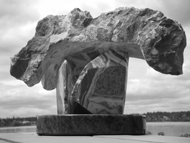
When I see work, like Pomodoro’s, that resonates, I make an effort to try and understand what story the artist is trying to tell. This usually means research in libraries and the internet, possibly purchasing books or catalogs not in the library. Pomodoro’s catalog is in Italian, so some of my clues for discovering his sculpture’s stories will be in translation.
With my limited Italian, this will be a challenge. Good-bye is ciao, right?
SN: Yes, and besides the ciao, do you have any other last words?
DM: Oh, yes, thanks for the interview.
Ed note: You can see more of Daniel Michael and his art on his website: teahouseart.com


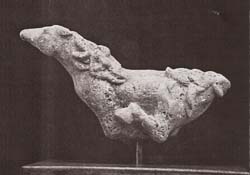
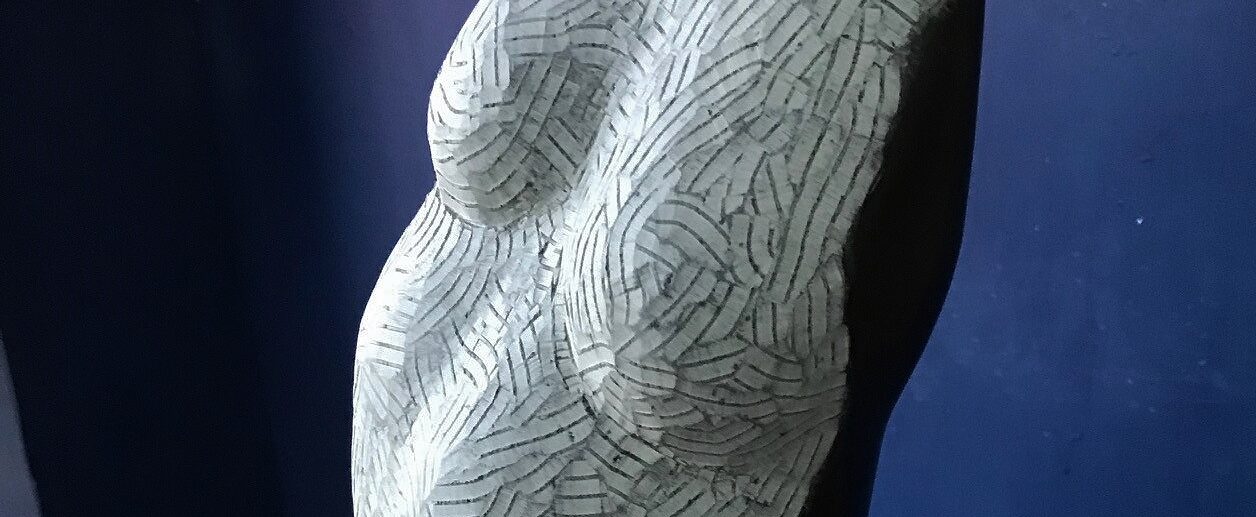
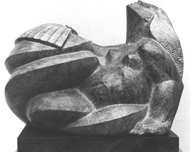
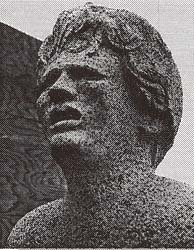
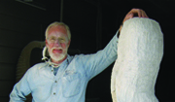

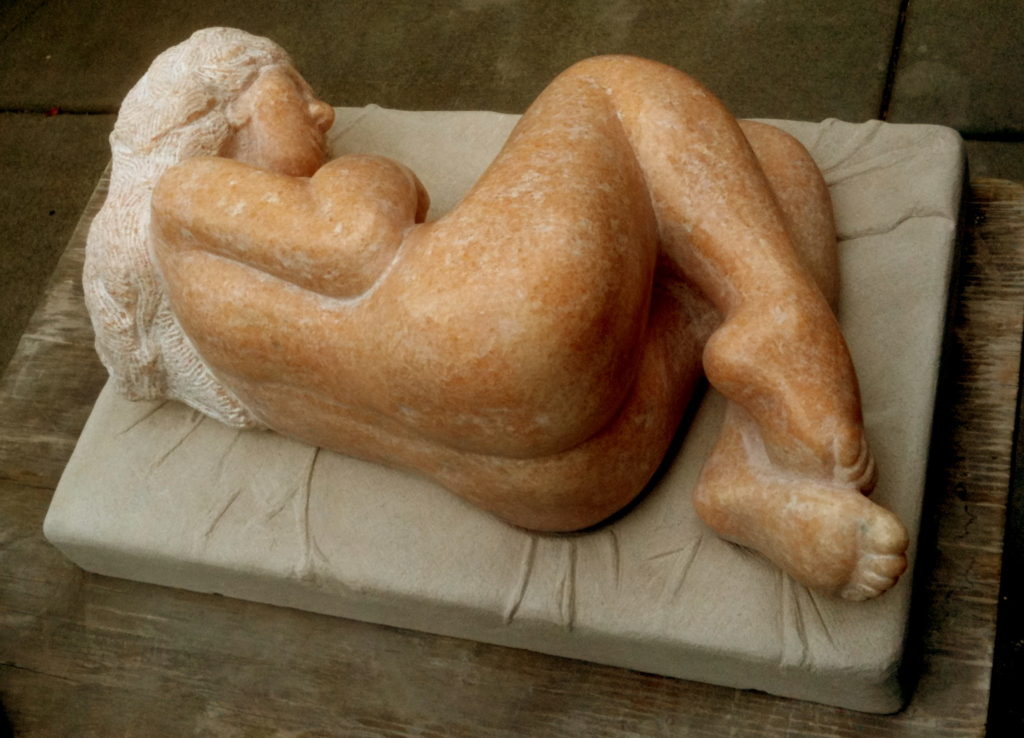

We need some kind of descriptive text here.